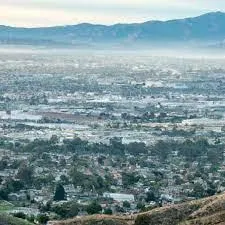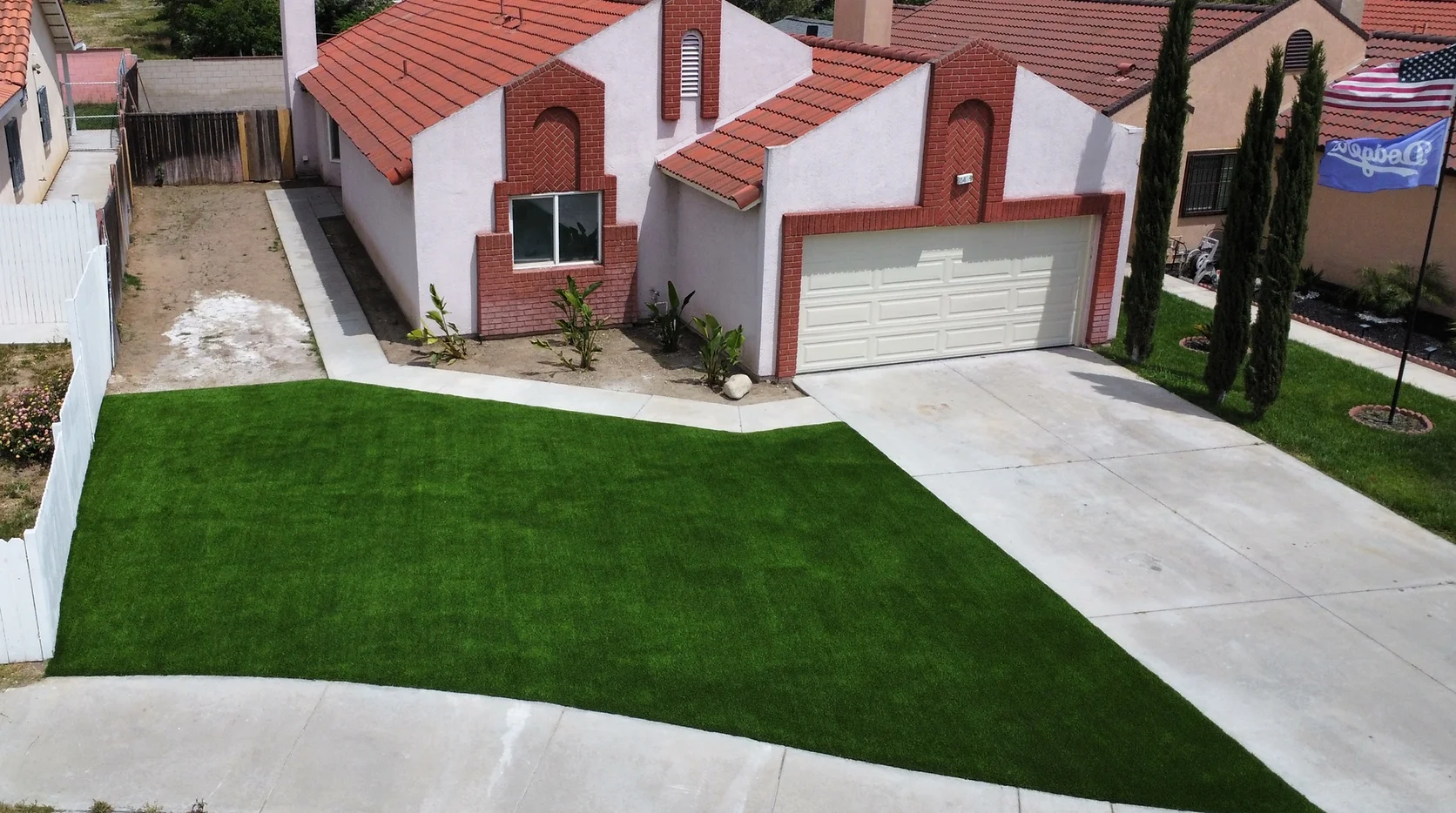
Gravel Gardens: Tips for a Stunning, Low-Maintenance Outdoor Space
I’m Austin Houston, the proud owner of Houston’s Landscaping, where we specialize in transforming outdoor spaces into beautiful, sustainable sanctuaries. Today, I’m excited to share some expert tips on designing and maintaining gravel gardens. These low-maintenance, water-efficient landscapes are perfect for the hot, dry climate of Moreno Valley and the surrounding Inland Empire areas we serve.
At Houston’s Landscaping, our mission is to provide high-quality, eco-friendly landscaping solutions that enhance the well-being of our clients and the environment. Whether you’re looking for permanent yard edging (curbing), artificial grass installation, or general landscaping care, we’ve got you covered. Let’s dive into how you can create a stunning gravel garden that requires minimal upkeep.

1. Site Selection and Preparation
The first step in creating a successful gravel garden is choosing the right site and preparing it properly. Here’s how you can ensure your garden thrives from the very beginning:
Site Selection:
Drainage: Choose a well-drained site with ample sunlight. Gravel gardens thrive in conditions where water drainage is efficient, preventing root rot and other moisture-related issues. Poor drainage can lead to waterlogging, which is detrimental to most drought-tolerant plants.
Sunlight: Ensure the site receives at least 6-8 hours of direct sunlight daily. Most plants suited for gravel gardens, such as succulents and Mediterranean herbs, require plenty of sunlight to flourish.
Soil Preparation:
Vegetation Removal: Begin by removing all existing vegetation and roots. This step is crucial to ensure a weed-free base. Use a shovel or a tiller to dig out the weeds, ensuring that the roots are removed to prevent regrowth.
Soil Enhancement: Improve the soil by adding organic matter to enhance fertility. Incorporating compost or well-rotted manure can significantly enrich the soil, providing essential nutrients that promote healthy plant growth.
Soil Structure: Test your soil to understand its composition. Sandy soils may need organic matter to improve water retention, while clay soils might require sand or grit to enhance drainage.
Weed Prevention: Lay down a geotextile fabric over the prepared soil. This helps prevent weeds from emerging while allowing water to drain through. Secure the fabric with landscape staples to keep it in place.
Pro Tip: After laying the geotextile fabric, cut slits where you plan to plant. This ensures that the fabric effectively prevents weed growth without hindering your planting process.

2. Soil and Gravel Layering
Proper layering is crucial for the health and aesthetics of your gravel garden.
Soil Improvement:
Add organic matter to the soil to improve its fertility and structure. This creates a healthy foundation for your plants.
Gravel Layering:
Cover the soil with a geotextile fabric to prevent weed growth.
Apply a thick layer of gravel (5-10 cm) on top of the fabric. This helps with water retention, reduces weed emergence, and enhances the garden’s appearance.
3. Plant Selection
Choosing the right plants is key to a thriving gravel garden. Opt for drought-tolerant plants that can thrive in a rocky, well-drained environment. Here’s how to make informed plant choices:
Ideal Plants for Gravel Gardens:
Succulents: These water-storing plants are perfect for gravel gardens due to their ability to thrive in dry conditions. Popular choices include Aloe Vera, Agave, and Echeveria.
Ornamental Grasses: These grasses add texture and movement to the garden. Consider varieties like Blue Fescue, Feather Reed Grass, and Mexican Feather Grass.
Mediterranean Herbs: Herbs such as Lavender, Rosemary, and Thyme are ideal for gravel gardens. They thrive in sunny, well-drained conditions and add fragrance to your garden.
Native Plants: Utilize native plants that are adapted to the local climate and soil conditions. These plants require less maintenance and water. Examples include California Poppy, Penstemon, and Ceanothus.

Plant Arrangement:
Water Needs Grouping: Group plants with similar water needs together. This makes it easier to manage irrigation and ensures that all plants receive the appropriate amount of water.
Height and Texture: Plan your garden with varying heights and textures to create depth and visual interest. Use taller plants as focal points and shorter plants to fill in gaps.
Bloom Times: Select plants with different bloom times to ensure continuous color and interest throughout the year. For instance, combine early bloomers like Iris with summer bloomers like Salvia and fall bloomers like Sedum.
Pro Tip: Create a planting plan before you start. Sketch your garden layout, marking where each plant will go. This will help you visualize the final look and make any adjustments before planting.
Companion Planting:
Complementary Species: Choose plants that complement each other in terms of growth habit, water needs, and aesthetics. For example, plant Sedum with Sempervivum to create a harmonious, low-water garden bed.
Beneficial Pairings: Some plants, like Lavender and Rosemary, can help repel pests naturally, benefiting the entire garden ecosystem.
Pro Tip: Avoid overcrowding plants. Give each plant enough space to grow to its full size, which reduces competition for resources and promotes healthy growth.
4. Design Principles
Creating a visually appealing gravel garden involves thoughtful design and planning.
Use of Rocks and Boulders:
Incorporate rocks and boulders to create natural-looking features. These elements add visual interest and provide microhabitats for plants.
Height and Texture:
Plan the garden with varying heights and textures to create depth and interest. Use larger plants as focal points and smaller plants to fill in gaps.
Focal Points:
Create focal points with large, striking plants or unique garden ornaments. This draws the eye and adds interest to the garden.

5. Maintaining Gravel Gardens
Maintaining a gravel garden is relatively easy, but regular care is essential to keep it looking its best.
Weed Control:
Regularly inspect the garden and remove any weeds that may have emerged through the gravel. Using a pre-emergent herbicide can help prevent weed seeds from germinating.
Watering and Irrigation:
Water the plants deeply but infrequently to encourage deep root growth. Consider using drip irrigation systems to provide efficient water delivery directly to the plant roots.
Plant Maintenance:
Prune plants to maintain their shape and remove any dead or diseased foliage. This keeps the garden looking neat and healthy.
Mulching:
Mulch around the plants with gravel to maintain soil moisture and temperature, reduce weeds, and improve the garden's aesthetic appeal.
Soil and Gravel Management:
Periodically check the gravel layer and replenish it as needed to maintain an even and adequate cover. This helps to prevent soil erosion and suppress weeds.
Ensure that the soil beneath the gravel remains healthy by occasionally adding organic matter or using slow-release fertilizers to provide essential nutrients.
Why Choose Houston’s Landscaping?
At Houston’s Landscaping, we’re committed to quality, sustainability, and customer satisfaction. Here’s why we’re the best choice for your landscaping needs:
Expertise: With over four years in business, we have the experience and knowledge to transform your outdoor spaces into beautiful, sustainable sanctuaries.
Personalized Service: We treat every property as if it were our own, working closely with you to bring your vision to life.
Innovative Solutions: We offer the latest in landscaping styles and materials, including unique techniques like Acacia Stone and Raiyn’s Carving for curbing.
Community Focus: We’re dedicated to serving Moreno Valley and the surrounding areas, contributing to the beauty and sustainability of our local community.
Our services include permanent yard edging (curbing), artificial grass installation, eco-friendly landscaping options (rocks, mulch, yard clean-ups), flat concrete work (patios, walkways, driveways), and general installation and maintenance services (planting, irrigation systems, landscaping care).
Conclusion
Designing and maintaining a gravel garden involves selecting the right site, preparing the soil, choosing appropriate plants, and following essential maintenance practices. By implementing these tips, you can create a beautiful, low-maintenance, and water-efficient garden that enhances the aesthetic and ecological value of your property.
At Houston’s Landscaping, we’re here to support you every step of the way. Contact us today at Houston’s Landscaping to start transforming your outdoor space into a stunning, eco-friendly retreat. Let’s grow greener together!
Remember: A well-designed gravel garden is not just about aesthetics; it’s about creating a space that reflects your values and contributes to a greener future. With Houston’s Landscaping, you can enjoy a beautiful, low-maintenance garden while making a positive impact on the environment. Let’s cultivate beauty and sustainability, one garden at a time!
